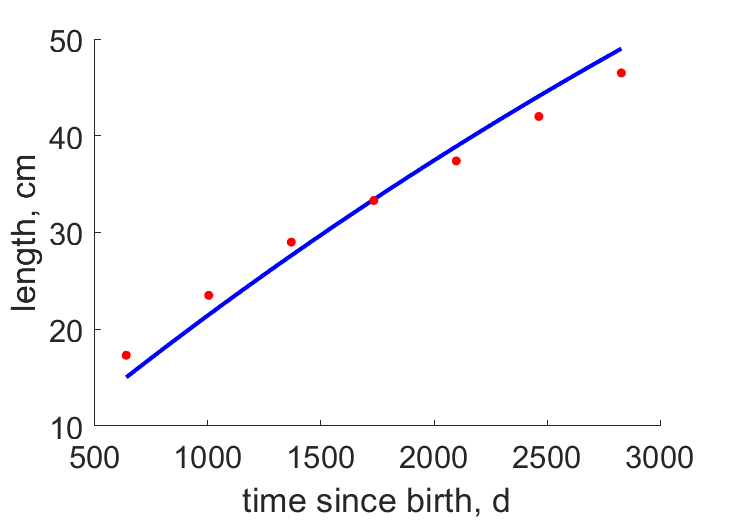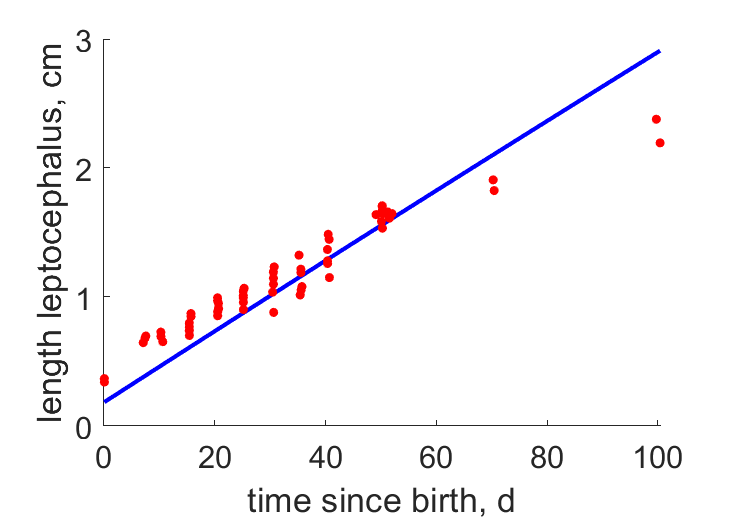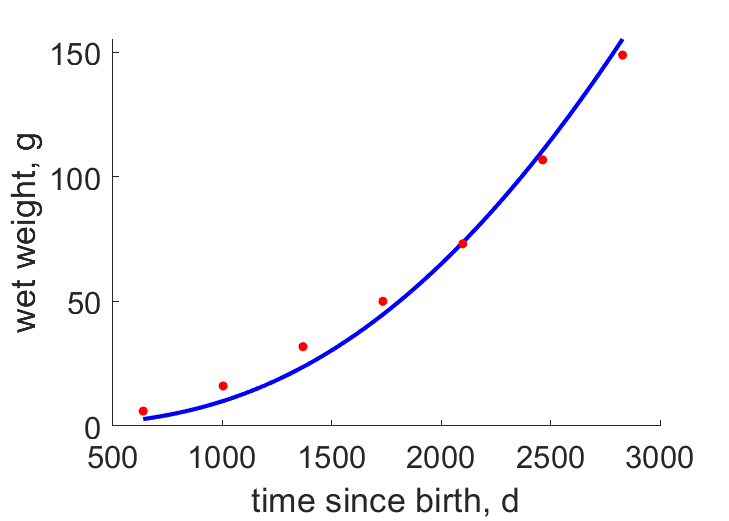Predictions & Data for this entry
| Model: ssj | climate: MB, Cfb | migrate: Mdc | phylum: |
| COMPLETE = 2.5 | ecozone: MPW, THp | food: bjPz, jiCi | class: |
| MRE = 0.083 | habitat: 0jMpe, jpFl, jpFp, jpFr, piMd | gender: D | order: |
| SMSE = 0.014 | embryo: Mpe | reprod: O | family: |
Zero-variate data
| Data | Observed | Predicted | (RE) | Unit | Description | Reference |
|---|---|---|---|---|---|---|
| ts | 120 | 123.3 | (0.02752) | d | time since birth at end leptocephalus stage | TanaKaga2001 |
| am | 4380 | 4380 | (4.859e-05) | d | life span | TanaKaga2001 |
| Ls | 6 | 6.706 | (0.1177) | cm | total length at end leptocephalus stage | TanaKaga2001 |
| Lp | 30 | 29.98 | (0.0006858) | cm | total length at puberty | Wiki |
| Li | 150 | 135.7 | (0.09517) | cm | ultimate total length | fishbase |
| Wwb | 0.00053 | 0.000499 | (0.05852) | g | wet weight at birth | CastEdwa2017 |
| Wwi | 1900 | 3745 | (0.9709) | g | ultimate wet weight | fishbase |
| Ri | 639.3 | 623.3 | (0.02491) | #/d | maximum reprod rate | guess |
Uni- and bivariate data
| Data | Figure | Independent variable | Dependent variable | (RE) | Reference |
|---|---|---|---|---|---|
| tL |  | time since birth | length | (0.05203) | GuanWang1994 |
| tLj |  | time since birth | length leptocephalus | (0.1357) | TanaKaga2001 |
| tW |  | time since birth | wet weight | (0.0773) | GuanWang1994 |
Pseudo-data at Tref = 20°C
| Data | Generalised animal | Anguilla japonica | Unit | Description |
|---|---|---|---|---|
| v | 0.02 | 0.007181 | cm/d | energy conductance |
| kap | 0.8 | 0.8049 | - | allocation fraction to soma |
| kap_R | 0.95 | 0.95 | - | reproduction efficiency |
| p_M | 18 | 20.52 | J/d.cm^3 | vol-spec som maint |
| k_J | 0.002 | 0.002 | 1/d | maturity maint rate coefficient |
| kap_G | 0.8 | 0.8006 | - | growth efficiency |
Discussion
- Temperatures were guessed
Facts
- Tranformation of leptocephali to glass eels occurs at 100 to 140 d after birth at TL 6 cm; juveniles reach E Asian estuaries in winter/spring at TL 55 to 60 mm (Ref: TanaKaga2001)
Bibliography